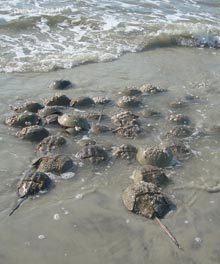 I wanted to take Latin in High School. The Latin teacher wore a toga and there was always laughter coming from his classroom. My mother called it a “dead language” and insisted that I take French. I rarely use my French, but of course, I went on to find that Latin would have been useful in my research as an historian and now as a gardener.
I wanted to take Latin in High School. The Latin teacher wore a toga and there was always laughter coming from his classroom. My mother called it a “dead language” and insisted that I take French. I rarely use my French, but of course, I went on to find that Latin would have been useful in my research as an historian and now as a gardener.
Today, I would like to focus on Latin binomials—something that the rest of the world uses commonly, but not in the States. Now why would you use a Latin name of a plant instead of a common name. Well, here is the story…. Before the use of a standardized system of naming plants, different regions had different names for botanical material. You might find a plant named in England “welcome-home-husband-never-so-drunk” or in America as “kiss me over the garden gate” or in another country translated as “mare’s fart.” Some of the names were quite naughty. People had tried to formulate an international system, but whose language to use? Enter on the scene Carl Linnaeus of Uppsala, Sweden. We owe our standardized system of binomial nomenclature to him. He used a first name like a surname which was the genus – such as “Magnolia.” The second name was the distinct species – “grandiflora.” The genus is always capitalized and the species is lower case. Both are written in italics. Latin was used as an internationally recognized language of science.
I honestly wish we used this system more frequently in this country. Some growers are careful to use the Latin binomial, but growers for the big box stores often do not label their plants as anything other than “Salvia” or “Phlox” or the name of the hybrid “Crimson Sun” or “Mardi Gras.” How do you really know what plant you are getting? Sometimes, the common name can be quite hilarious as in “Hairy Balls” Milkweed (Gymnocarpus physocarpa). I wondered what nurseries would use as a common name. One nursery calls it “Family Jewels.” Who says that growers do not have a sense of humor.
Having said this, plant DNA researchers are changing some Latin binomials as they find out that certain plants belong to different genus. Like “Ancestry” for Plants, new relatives are being discovered. I was fortunate to visit the Royal Horticultural Society’s research facility called Hilltop at their most famous garden outside of London, RHS Wisley. I could watch the researchers extracting plant DNA.
Now that I am off that soapbox, what should you look for at garden centers right now?
Garden centers are getting in truckloads of annuals and perennials every day. I am finding more native plants this year than ever before. As the soil warms up and our nights get more temperate, it is okay to put out annual flowers for color such as marigolds, petunias, pentas, and begonias.
Do not be afraid to try ornamental grasses mixed in with your flowers and/or shrubs. They give great late season and winter interest as well as provide shelter for hibernating bees. One of the best is Panicum virgatum or Switch grass. It grows tall and does not spread outward or become invasive. Northern Sea Oats is also a good choice as it is a native. And do not forget Muhly grass. Now is the time to plant it for those wispy pink or white flowers in October.
A fun plant to look for is Red Hot Poker (Kniphofia spp) It has bright spikes of flowers that stand tall in a garden and come in many hot colors as the name implies.
Salvias of all varieties are great for a perennial garden. They are tough, bloom all summer long, and the deer leave them alone. Every year growers come up with new cultivars.
And last, but not least, Bronze Fennel (Foeniculum vulgare) will give you a feathery clump of foliage that butterfly caterpillars love. A mixture of foliage and flowers will give you long lasting interest in your garden.
When you buy plants, do not be a plunker. I have finally gotten over this bad habit. I would see a plant and only buy one and plop it somewhere in my garden where there was a blank space. It is so much better to buy in multiples for a much more dramatic effect rather than have one poor lonely plant all by itself. Multiples in odd numbers give a more natural look than planting two by two’s like soldiers. I have been buying either three or five of each variety.
Enjoy our spring weather before it gets hot and have fun planting new things in your garden space.








